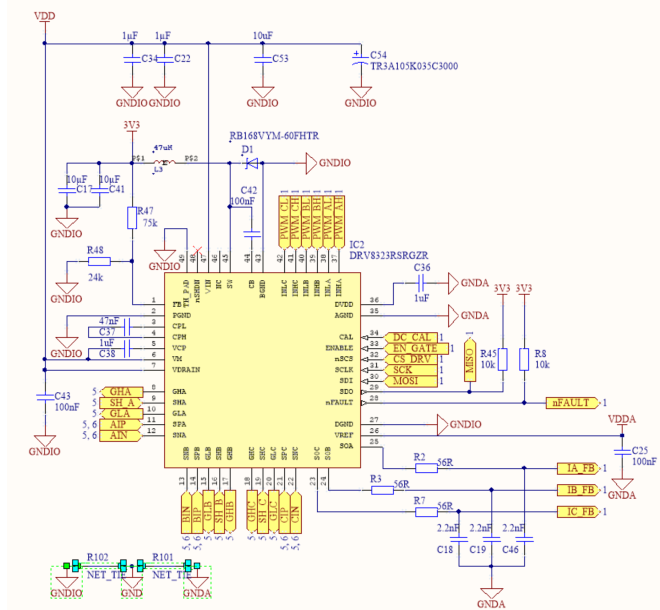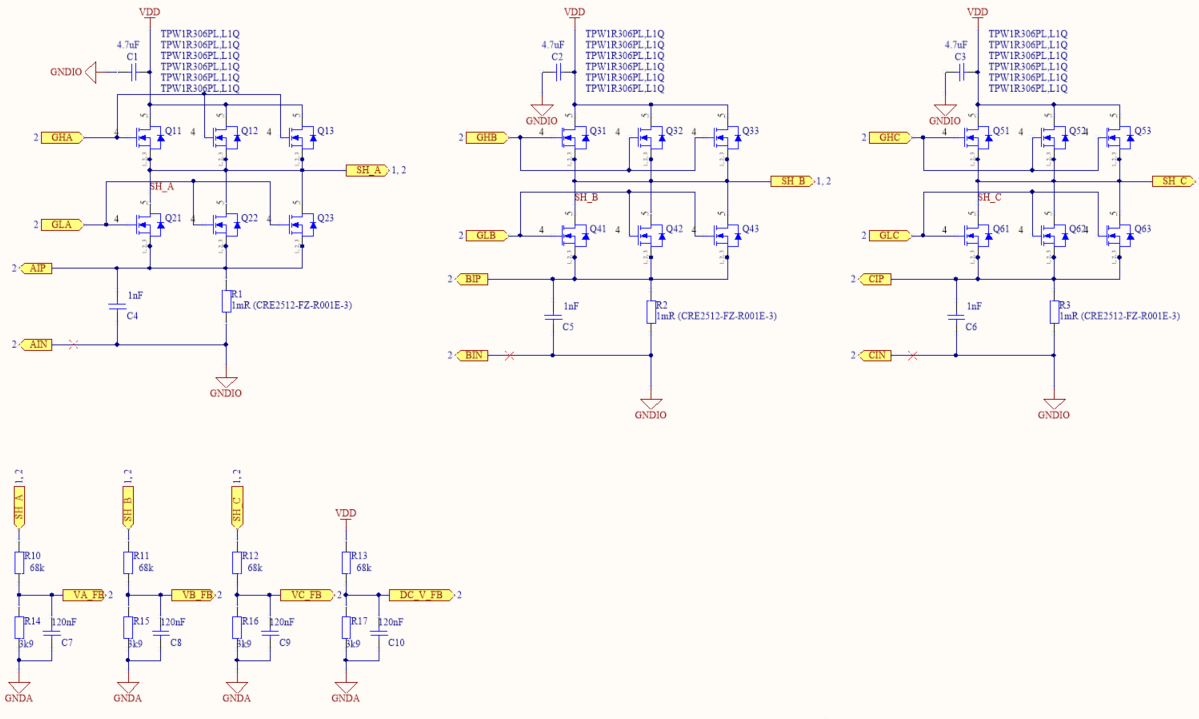Other Parts Discussed in Thread: TMS320F28069
Hi, I'm driving totally 18 MOSFET's with DRV8323RSRG used with MCU TMS320F28069. Total gate charge of single mosfet is 91nC. When I apply 45KHz pwm with 50% duty cycle (VDD 12V), supply current is approximately 170mA. Output voltages are always OK. But when the power supply voltage increases, the current consumption increases too and DRV starts heating.
Measured values in various power supply voltage with no load:
when DRV disabled: 12V: 50mA,
20V: 30mA
30V: 20mA
DRV enabled(without pwms): 12V: 70mA
20V: 40mA
30V: 30mA
all 3 phases active(18x active MOSFET) : 12V:170mA
20V: 210mA
30V: 230mA
only one phase active(any)(6x active MOSFET) : 12V: 100mA
20V: 90mA
30V: 90mA
I tried to adjust IDRIVE, TDRIVE, and also check deadbands on the scope if pwms don't cross, but that has no effect on curent consumption.
Screenshots of VGS when supply was 12V:
high side VGS:
low side VGS:
Please help if anybody knows what may cause this problem.
Thanks a lot.






